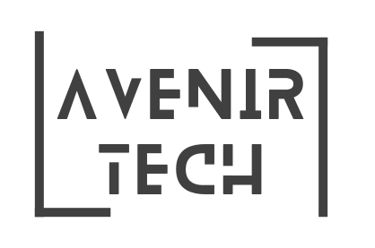Transforming Manufacturing with IoT: Key Applications, Benefits & Challenges
Discover how IoT is revolutionizing manufacturing through real-time monitoring, predictive maintenance, and smarter operations. Learn how an IoT services company can support this digital transformation.
AVENIR TECH
7/2/20253 min read
The manufacturing industry has always been a pioneer in adopting automation and technology. But with the rise of the Internet of Things (IoT), manufacturers are now entering a new phase of efficiency, intelligence, and data-driven operations. IoT is helping manufacturers achieve real-time visibility, predictive capabilities, and streamlined workflows like never before.
Let’s explore how IoT is shaping the future of manufacturing, what components drive its adoption, and why it matters for the industry at large.
What Is IoT in Manufacturing?
IoT in manufacturing—often referred to as the Industrial Internet of Things (IIoT)—involves the integration of sensors, software, and connectivity into physical machines and production systems. These devices collect and exchange data in real-time, enabling businesses to monitor, analyze, and improve every stage of the manufacturing process.
This connectivity allows manufacturers to move from reactive to proactive operations, optimizing everything from asset utilization to maintenance scheduling and energy consumption.
Key Components of IoT in Manufacturing
1. Sensors and Devices
Sensors play a foundational role in IoT. They capture data from machines, production lines, and the surrounding environment. These can measure temperature, vibration, humidity, pressure, energy usage, and more—helping detect even the smallest anomalies in operations.
2. Connectivity and Gateways
Collected data is transmitted via secure networks to cloud-based platforms or on-site servers. Gateways act as intermediaries, aggregating data from different devices and standardizing communication protocols to ensure seamless transmission.
3. Data Processing and Analytics
Once data is collected, it needs to be processed and analyzed. IoT platforms use analytics tools—often powered by AI or machine learning—to identify patterns, predict failures, and suggest optimizations in real time.
4. Cloud Infrastructure
Cloud computing enables scalable data storage and real-time access from multiple locations. It also supports remote monitoring, predictive analytics, and centralized system management.
5. User Interfaces and Dashboards
The final step is visualization. Custom dashboards allow stakeholders to track key metrics, machine health, and productivity insights from anywhere, anytime.
Benefits of IoT in Manufacturing
IoT is bringing measurable impact to manufacturers by enhancing decision-making and operational control. Key benefits include:
Predictive Maintenance: Prevent equipment breakdowns by monitoring performance and scheduling maintenance based on actual usage and condition, rather than fixed intervals.
Improved Operational Efficiency: Identify bottlenecks, reduce downtime, and optimize machine usage.
Enhanced Product Quality: Monitor critical factors like temperature and pressure in real-time to ensure consistent product quality.
Energy Optimization: Track energy consumption across the facility and make informed changes to reduce waste and cost.
Supply Chain Visibility: Gain end-to-end transparency in production and logistics to improve planning and reduce delays.
For companies aiming to implement these technologies, partnering with an experienced IoT services company can provide strategic guidance, secure infrastructure, and tailored solutions to fit specific operational needs.
Real-World Applications in Manufacturing
IoT is already transforming how factories operate. Some practical use cases include:
Smart Machines: Equipment that self-monitors and adjusts its operation to maximize output.
Connected Robotics: Collaborative robots (cobots) that work alongside humans with high precision.
Digital Twins: Virtual models of physical assets that mirror real-time performance, allowing for simulations and remote diagnostics.
Asset Tracking: Monitoring tools to locate and manage tools, raw materials, and finished goods in real time.
Challenges to Consider
While IoT offers tremendous advantages, manufacturers must navigate a few challenges:
Cybersecurity Risks: The more connected a system is, the more vulnerable it becomes to cyberattacks.
Integration with Legacy Systems: Connecting new IoT devices with older infrastructure can be complex.
Data Overload: Managing and interpreting vast amounts of data requires proper storage and intelligent processing.
Initial Investment: Implementing IoT requires capital investment in devices, platforms, and training.
Overcoming these challenges requires careful planning and support from a reliable IoT services company with experience in industrial transformation.
Frequently Asked Questions (FAQs)
Q1. What is the role of IoT in manufacturing?
IoT in manufacturing allows devices, machines, and systems to communicate and share data. This real-time connectivity helps improve productivity, reduce downtime, and enhance product quality through better monitoring and control.
Q2. How does IoT help reduce manufacturing costs?
By enabling predictive maintenance, optimizing energy use, and identifying process inefficiencies, IoT helps manufacturers lower operational costs while improving output.
Q3. What industries use IoT in manufacturing?
Industries such as automotive, electronics, pharmaceuticals, food and beverage, and heavy machinery actively use IoT to monitor production, automate processes, and ensure safety compliance.
Q4. What is the difference between IoT and IIoT?
IoT refers to the broader concept of connected devices across any industry or environment, while IIoT (Industrial Internet of Things) specifically applies to industrial and manufacturing applications where operational efficiency and automation are the primary focus.
Q5. Why should I work with an IoT services company?
A trusted IoT services company can help assess your needs, implement secure and scalable solutions, and provide ongoing support. They bring expertise in integrating devices, analyzing data, and managing system security.
Final Thoughts
IoT is no longer a future concept—it is a present-day driver of manufacturing innovation. From smart factories to predictive analytics, the potential of connected systems is reshaping how goods are made and delivered.
For manufacturers looking to stay competitive in a digital economy, embracing IoT is essential. With the support of a skilled IoT services company, businesses can unlock real-time insights, achieve higher efficiency, and future-proof their operations in a connected world.


© Avenir Tech 2025. All rights reserved.
Subscribe to our newsletter
Company
